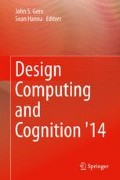Abstract
Bioinspired design uses nature as a source of inspiration for creating solutions to engineering design problems. Nature evolves time-tested, efficient designs that may offer an innovative solution. However, it appears that one of the main obstacles to bioinspired design is the engineers’ lack of biological knowledge, which causes difficulty in identifying analogous natural systems for the design problems. In this paper, we compare the ability of senior engineering and biology undergraduates to use nature as inspiration for concept generation. The two groups’ solutions were analyzed for quantity of non-redundant ideas, quality, novelty, and variety of the solutions. The initial results indicate that there is not a statistically significant difference between the two groups. General trends are examined, and a qualitative study of the results is presented. The overall results suggest that biology coursework does not significantly aid students in identifying analogous biological systems or developing more creative solutions.
Access this chapter
Tax calculation will be finalised at checkout
Purchases are for personal use only
References
Van Nierop EA, Alben S, Brenner MP (2008) How bumps on whale flippers delay stall: an aerodynamic model. Phys Rev Lett 100(5):54502, 1-4
Barthlott W, Neinhuis C (1997) Purity of the sacred lotus, or escape from contamination in biological surfaces. Planta 202:1–8
Geim A, Grigorieva SVDIV, Novoselov K, Zhukov A, Shapoval SY (2003) Microfabricated adhesive mimicking gecko foot-hair. Nat Mater 2:461–463
Autumn K, Sitti M, Liang YA, Peattie AM, Hansen WR, Sponberg S, Kenny TW, Fearing R, Israelachvili JN, Full RJ (2002) Evidence for van der Waals adhesion in gecko setae. Proc Natl Acad Sci 99:12252–12256
Vincent JFV, Mann DL (2002) Systematic technology transfer from biology to engineering. Philos Trans R Soc Lond Ser A Math Phys Eng Sci 360:159–173
Yen J, Weissburg M (2007) Perspectives on biologically inspired design: introduction to the collected contributions. Bioinspir Biomim 2:1–4
Dym C, Agogino A, Eris O, Frey D, Leifer L (2005) Engineering design thinking, teaching, and learning. J Eng Educ 94:103–120
Hyman BI (1998) Fundamentals of engineering design. Prentice Hall, Upper Saddle River
Otto KN, Wood KL (2000) Product design. Prentice Hall, Englewood Cliffs
Ulrich KT, Eppinger SD, Goyal A (2011) Product design and development. Irwin/McGraw-Hill, New York
Chakrabarti A, Sarkar P, Leelavathamma B, Nataraju B (2005) A functional representation for aiding biomimetic and artificial inspiration of new ideas. Artif Intell Eng Des Anal Manuf 19:113–132
Benami O, Jin Y (2002) Creative stimulation in conceptual design. IDETC 2002:251–263
Shu L, Ueda K, Chiu I, Cheong H (2011) Biologically inspired design. CIRP Ann Manuf Technol 60:673–693
Dunbar K (1997) How scientists think: on-line creativity and conceptual change in science. In: Ward TB (ed) Creative thought: an investigation of conceptual structures and processes. American Psychological Association, pp 461–493
Christensen BT, Schunn CD (2007) The relationship of analogical distance to analogical function and preinventive structure: the case of engineering design. Mem Cognit 35:29–38
Vattam S, Helms ME, Goel AK (2007) Biologically-inspired innovation in engineering design: a cognitive study. Technical report. Georgia Institute of Technology
Gebeshuber I, Drack M (2008) An attempt to reveal synergies between biology and mechanical engineering. Proc IME C J Mech Eng Sci 222:1281–1287
The Biomimicry Institute (2013) What is biomimicry? http://biomimicryinstitute.org/about-us/what-is-biomimicry.html
Biomimicry Guild (2008) A conversation with Janine Benyus
Altshuller G (1999) The innovation algorithm: Triz, systematic innovation and technical creativity. Technical Innovation Center, Worcester
Vincent JFV, Bogatyreva OA, Bogatyrev NR, Bowyer A, Pahl AK (2006) Biomimetics: its practice and theory. J R Soc Interface 3:471–482
Stone RB, Wood KL (2000) Development of a functional basis for design. J Mech Des 122:359–370
Nagel JKS, Stone RB, Mcadams DA (2010) An engineering-to-biology thesaurus for engineering design. IDETC 2010:117–128
Cheong H, Chiu I, Shu L, Stone R, Mcadams DA (2011) Biologically meaningful keywords for functional terms of the functional basis. J Mech Des 133:021007-1-11
Cheong H, Shu L, Stone RB, Mcadams DA (2008) Translating terms of the functional basis into biologically meaningful keywords. IDETC 2008:137–148
Vattam S, Wiltgen B, Helms M, Goel A, Yen J (2011) Dane: fostering creativity in and through biologically inspired design. Des Creat 2010:115–122
The Biomimicry 3.8 Institute (2008–2013) Asknature. http://www.asknature.org/
Glier MW, Tsenn J, Linsey JS, Mcadams DA (2012) Evaluating the directed method for bioinspired design. IDETC 2012:403–413
Genco N, Hölttä-Otto K, Seepersad C (2012) An experimental investigation of the innovation capabilities of undergraduate engineering students. J Eng Educ 101:60–81
Shah JJ, Smith SM, Vargas-Hernandez N (2003) Metrics for measuring ideation effectiveness. Des Stud 24:111–134
Linsey J, Tseng I, Fu K, Cagan J, Wood K, Schunn C (2010) A study of design fixation, its mitigation and perception in engineering design faculty. J Mech Des 132:041003, 1-12
Landis JR, Koch GG (1977) The measurement of observer agreement for categorical data. Biometrics 33:159–174
Johnson-Laird PN (1989) Analogy and the exercise of creativity. In: Vosniadou S (ed) Similarity and analogical reasoning. Cambridge University Press, pp 313–331
Acknowledgment
The authors would like to acknowledge the support provided by the National Science Foundation NSF EEC 1025155/1338383. Any opinions, findings, and conclusions or recommendations expressed in this paper are those of the authors and do not necessarily reflect the views of the National Science Foundation.
Author information
Authors and Affiliations
Corresponding author
Editor information
Editors and Affiliations
Rights and permissions
Copyright information
© 2015 Springer International Publishing Switzerland
About this paper
Cite this paper
Tsenn, J., McAdams, D.A., Linsey, J.S. (2015). A Comparison of Mechanical Engineering and Biology Students’ Ideation and Bioinspired Design Abilities. In: Gero, J., Hanna, S. (eds) Design Computing and Cognition '14. Springer, Cham. https://doi.org/10.1007/978-3-319-14956-1_36
Download citation
DOI: https://doi.org/10.1007/978-3-319-14956-1_36
Publisher Name: Springer, Cham
Print ISBN: 978-3-319-14955-4
Online ISBN: 978-3-319-14956-1
eBook Packages: EngineeringEngineering (R0)

